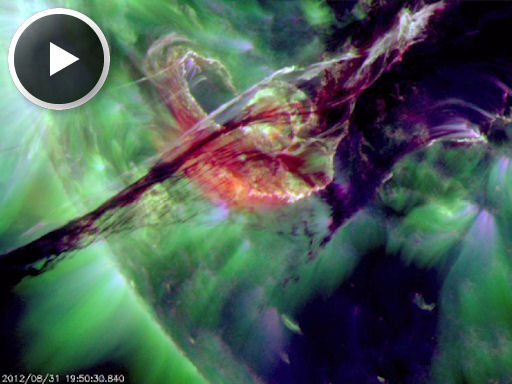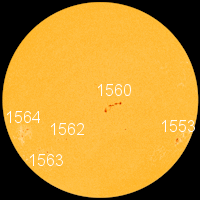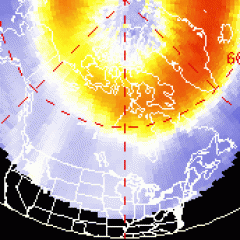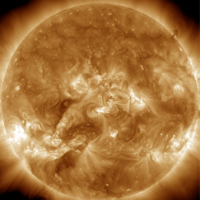CHANCE OF FLARES: Sunspot AR1560 has more than quadrupled in size since August 30th, and now the fast growing active region is directly facing our planet: movie. NOAA forecasters estimate a 40% chance of M-class solar fares during the next 48 hours. Solar Flare alerts: text, phone.
MAGNIFICENT ERUPTION: A filament of magnetism curling around the sun's southeastern limb erupted on August 31st, producing a coronal mass ejection (CME), a C8-class solar flare, and one of the most beautiful movies ever recorded by NASA's Solar Dynamics Observatory:
The explosion hurled a CME away from the sun traveling faster than 500 km/s (1.1 million mph). The cloud, shown here, is not heading directly toward Earth, but it will deliver a glancing blow to our planet's magnetic field. NOAA forecasters estimate a 40% chance of strong polar geomagnetic storms when the cloud arrives on Sept. 3rd.

![]()
Solar wind
speed: 337.7 km/sec
density: 0.4 protons/cm3
explanation | more data
Updated: Today at 1636 UT
![]()
X-ray Solar Flares
6-hr max: C3 1021 UT Sep02
24-hr: C3 1021 UT Sep02
explanation | more data
Updated: Today at: 1600 UT
![]()
![]()
![]()
Daily Sun: 02 Sep 12
![]()
![]()
Growing sunspot 1560 poses a threat for Earth-directed M-flares. Credit: SDO/HMI
![]()
![]()
![]()
Sunspot number: 120
What is the sunspot number?
Updated 02 Sep 2012
Spotless Days
Current Stretch: 0 days
2012 total: 0 days (0%)
2011 total: 2 days (<1%)
2010 total: 51 days (14%)
2009 total: 260 days (71%)
Since 2004: 821 days
Typical Solar Min: 486 days
Update 02 Sep 2012
The Radio Sun
10.7 cm flux: 131 sfu
explanation | more data
Updated 02 Sep 2012
![]()
![]()
![]()
Current Auroral Oval:
![]()
Switch to: Europe, USA, New Zealand, Antarctica
Credit: NOAA/POES
![]()
![]()
![]()
Planetary K-index
Now: Kp= 2 quiet
24-hr max: Kp= 3 quiet
explanation | more data
![]()
Interplanetary Mag. Field
Btotal: 7.1 nT
Bz: 6.4 nT south
explanation | more data
Updated: Today at 1636 UT
![]()
![]()
![]()
Coronal Holes: 02 Sep 12
![]()
![]()
There are no large coronal holes on the Earthside of the sun. Credit: SDO/AIA.





